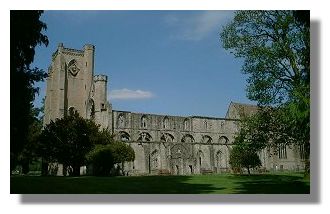
Early History
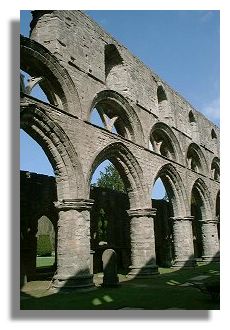 The name Dunkeld is derived from "the fort (dun) of the Celts" and it may have been St Columba or St Adamnan who founded a monastery on the banks of the river Tay, in what we know now as Perthshire, 15 miles north of the Fair City of Perth itself. The town became the capital (together with Scone, further south) of King Kenneth mac-Alpin who united the Scots and the Picts in the 9th century. This was at a time when the west coast was coming under increasing pressure from Viking raids and Kenneth brought relics of St Columba from Iona to Dunkeld (and the Stone of Destiny to Scone). While Dunkeld lost its pre-eminent position in the church to St Andrews, the abbots of Dunkeld were important officers of state. Crinan, the abbot in the middle of the 11th century was killed in battle in 1045. He was married to the daughter of King Malcolm II and their son ruled as King Duncan I (until he was killed by Macbeth in 1040).
The name Dunkeld is derived from "the fort (dun) of the Celts" and it may have been St Columba or St Adamnan who founded a monastery on the banks of the river Tay, in what we know now as Perthshire, 15 miles north of the Fair City of Perth itself. The town became the capital (together with Scone, further south) of King Kenneth mac-Alpin who united the Scots and the Picts in the 9th century. This was at a time when the west coast was coming under increasing pressure from Viking raids and Kenneth brought relics of St Columba from Iona to Dunkeld (and the Stone of Destiny to Scone). While Dunkeld lost its pre-eminent position in the church to St Andrews, the abbots of Dunkeld were important officers of state. Crinan, the abbot in the middle of the 11th century was killed in battle in 1045. He was married to the daughter of King Malcolm II and their son ruled as King Duncan I (until he was killed by Macbeth in 1040).
At the beginning of the 12th century, King Alexander I revived the religious centre and the earliest parts of the present structure date from the late 13th and early 14th centuries.
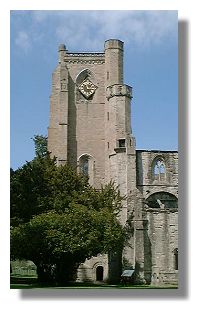 The foundations of the nave (part of the surviving stonework is shown in the illustration above) were laid in 1406. A number of the architectural features of this part of the church show influences from continental Europe - commercial ties with the Low Countries were being developed and, as a result of recurring wars with England, there was not the same opportunity for craftsmen to interchange with that country. But it took 60 years before the nave was consecrated.
The foundations of the nave (part of the surviving stonework is shown in the illustration above) were laid in 1406. A number of the architectural features of this part of the church show influences from continental Europe - commercial ties with the Low Countries were being developed and, as a result of recurring wars with England, there was not the same opportunity for craftsmen to interchange with that country. But it took 60 years before the nave was consecrated.
As is often the case with large religious buildings, additional elements were added over the centuries. Bishop Lauder in the 15th century was particularly active - he added a chapter house and also built the large tower (seen here on the left) and remodelled the west front.
Reformation and After
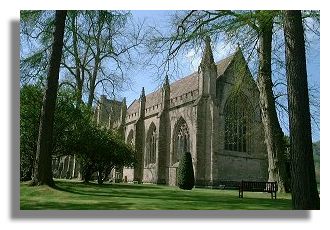 With the Reformation in the middle of the 16th century, there was no longer a need for a Roman Catholic cathedral with all its finery - its monuments, decoration and fitments were regarded by the Reformed Church as "idolatry" and were destroyed. Parts of the roof were removed by the local laird.
With the Reformation in the middle of the 16th century, there was no longer a need for a Roman Catholic cathedral with all its finery - its monuments, decoration and fitments were regarded by the Reformed Church as "idolatry" and were destroyed. Parts of the roof were removed by the local laird.
Fortunately, the local community began to use the eastern limb of the building (shown here) as a local place of worship. This was actually the oldest part of the cathedral and meant that it was preserved at a time when many cathedrals in Scotland were being torn apart.
Battle of Dunkeld
Dunkeld was the location of a fierce battle in 1689. John Graham of Claverhouse, Viscount Dundee, with a largely Highland army, had led an uprising in favour of the exiled King James VII. Viscount Dundee won a famous victory at Killiecrankie (15 miles north of Dunkeld) but died in the battle. A month later, Government forces made up largely of the Cameronian regiment, moved in to Dunkeld and fortified the town, with the cathedral used as the main refuge for the townspeople. During the ensuing battle, the town was largely destroyed and the cathedral was badly damaged (with lead from the roof being used for lead shot!). The government forces emerged victorious.
"Modernisation" of Dunkeld
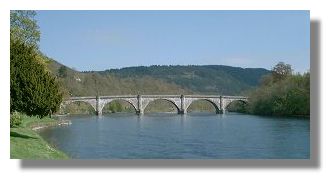
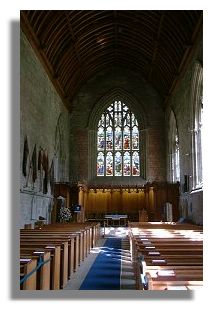 At the end of the 18th century, the cathedral was hemmed in by a large number of ecclesiastical and other buildings. But at the start of the 19th century, after the construction of a new bridge over the river Tay in 1805-09 (pictured here), many of the buildings were cleared away by the Dukes of Atholl and the present broad lawns, fine trees and open aspect were created. Although we can appreciate this today, the demolition of these old buildings also created a better view for the Dukes of Atholl in their nearby house! But they also created a relatively "modern" town in the 19th century and much of the attraction of the place is due to these efforts - which have now been preserved by the sterling work of the National Trust for Scotland.
At the end of the 18th century, the cathedral was hemmed in by a large number of ecclesiastical and other buildings. But at the start of the 19th century, after the construction of a new bridge over the river Tay in 1805-09 (pictured here), many of the buildings were cleared away by the Dukes of Atholl and the present broad lawns, fine trees and open aspect were created. Although we can appreciate this today, the demolition of these old buildings also created a better view for the Dukes of Atholl in their nearby house! But they also created a relatively "modern" town in the 19th century and much of the attraction of the place is due to these efforts - which have now been preserved by the sterling work of the National Trust for Scotland.
The eastern limb of the cathedral, which had continued in use after the Reformation, was further restored and enhanced in the 19th century, with much of the cost being borne by the Dukes of Atholl. The stained glass window (seen here) was upgraded and the sacristy became a place for memorials to the Atholl family. There is a statue to the fourth Duke (who died in 1830). This area also houses the cathedral's fine early carved stones from the 9th or 10th centuries.
While the eastern limb continues to be used as the local parish church, the rest of the cathedral is in the care of Historic Scotland, a government agency.



